Witness Pope Gregory the Great | ||
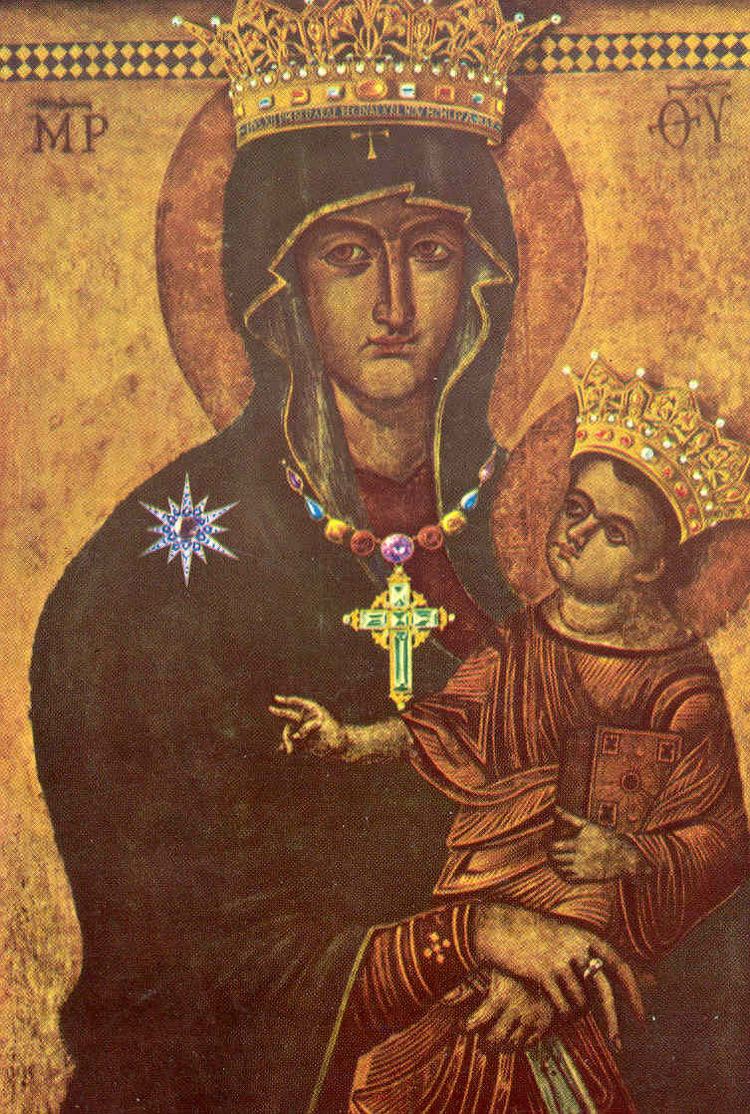 | ||
Location Basilica of Saint Mary Major Holy See approval Pope Gregory XVIPope Pius XII Shrine Basilica of Saint Mary Major Similar Saint Luke painting the Virgin, Black Madonna of Często, Theotokos of Vladimir, Black Madonna, Our Lady of Perpetual Help | ||
Salus populi romani
Salus Populi Romani (Protectress, or more literally health or salvation, of the Roman People) is a Roman Catholic title associated with the venerated image of the Blessed Virgin Mary in Rome. This Byzantine icon of the Madonna and Christ Child holding a Gospel book and is enshrined within the Borghese (Pauline) Chapel of the Basilica of Saint Mary Major.
Contents
- Salus populi romani
- Salus populi romani top 5 facts
- History
- Legend of Saint Luke
- Description
- Dating by art historians
- Papal patronage
- Mother Thrice Admirable
- References
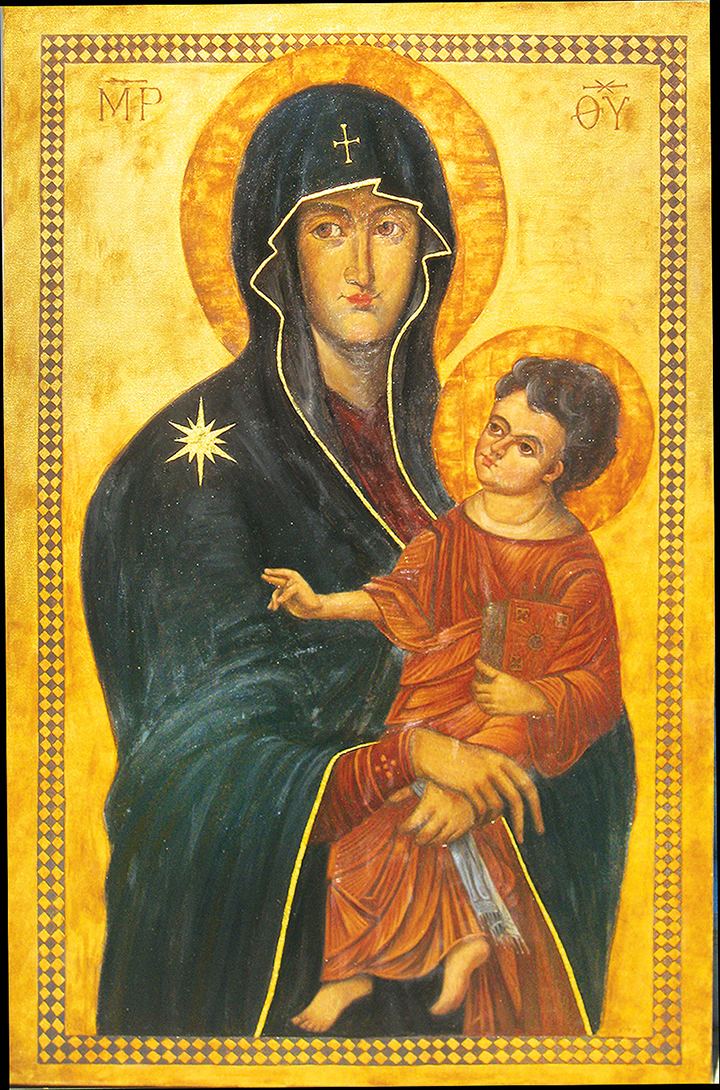
The image arrived in Rome in the year 590 AD during the reign of Pope Gregory I. Pope Gregory XVI granted the image a Canonical Coronation on 15 August 1838 through the Papal bull Cælestis Regina. The venerated image regained its longstanding devotion and status by being crowned again for the second time by Pope Pius XII on the Feast of the Queenship of Mary on 11 October 1954 accompanied by his Papal bull Ad Reginam Caeli. Recent papal devotion includes Pope John Paul II who highlighted its iconography during the World Youth Day for the Jubilee Year of 2000. Pope Benedict XVI also venerated the image on various occasions with that specific Marian title. Pope Francis also made this icon one of his first places of pilgrimage the day after his election to the Papacy.

The phrase Salus Populi Romani goes back to the legal system and pagan rituals of the ancient Roman Republic. After the legalisation of Christianity by Emperor Constantine the Great through the Edict of Milan in 313 AD, the phrase was sanctioned as a Marian title for the Blessed Virgin Mary.

Salus populi romani top 5 facts
History
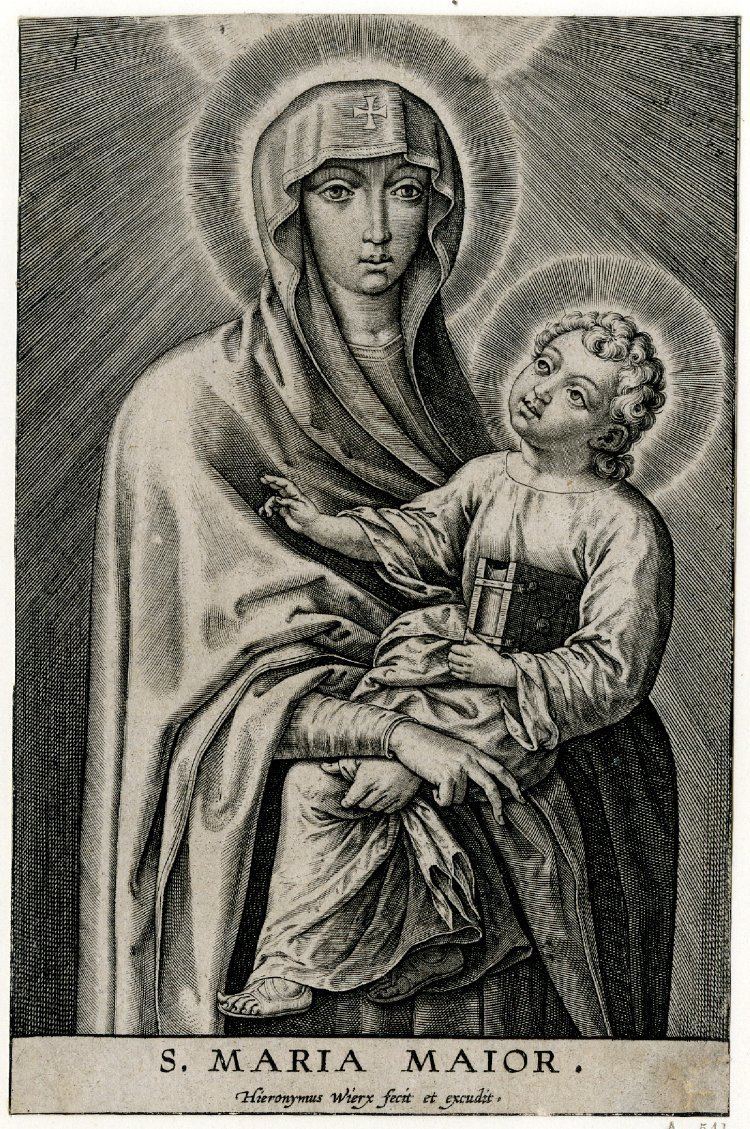
The image is held to have arrived from Crete in the year 590 AD during the Pontificate of Pope Gregory the Great, who welcomed the image in person on its arrival borne with a floral boat from the Tiber river. For centuries it was placed above the door to the basilica's baptistery chapel, wherein the year 1240 it began to be called Regina Caeli ("Queen of Heaven") in an official document. Later it was moved to the nave, and from the 13th century it was preserved in a marble tabernacle. Since 1613, it has been located in the altar tabernacle of the Cappella Paolina that was built specifically for it, later known to English-speaking pilgrims as the Lady Chapel. The church, Saint Maria Maggiore, is considered the third of the Roman patriarchal basilicas. The church and its Marian shrine are under the special patronage of the popes.

From at least the 15th century, it was honored as a miraculous image, and it was later used by the Jesuit Order in particular to foster devotion to the Mother of God through the Sodality of Our Lady movement.

The Roman Breviary states, "After the Council of Ephesus (431) in which the Mother of Jesus was acclaimed as Mother of God, Pope Sixtus III erected at Rome on the Esquiline Hill, a basilica dedicated to the honor of the Holy Mother of God. It was afterward called Saint Mary Major and it is the oldest church in the West dedicated to the honor of the Blessed Virgin Mary."
The Roman Pontifical gives the following account:
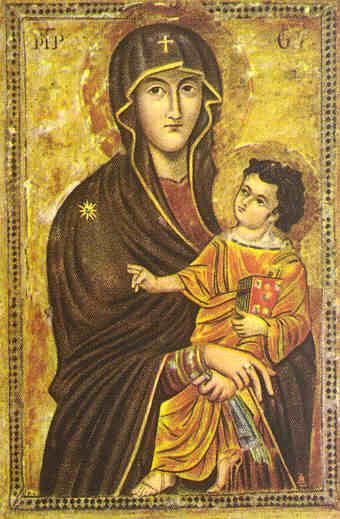
"The Liberian basilica, today called Saint Mary Major, was founded by Pope Liberius (352-366) and was restored and enlarged by Sixtus III. … Pope Liberius selected a venerated picture that hung in the pontifical oratory. It had allegedly been brought to Rome by Saint Helena..."
Legend of Saint Luke
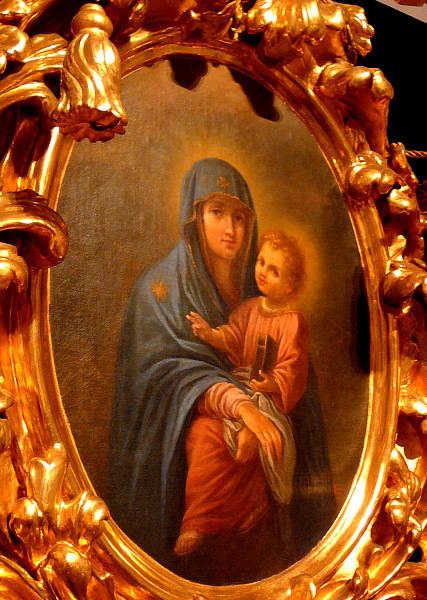
Salus Populi Romani is one of the so-called "Luke images" of which there are many throughout the world. These were believed to have been painted from life by Saint Luke himself. According to the legend: "after the Crucifixion, when Our Lady moved to the home of St. John, she took with her a few personal belongings--among which was a table built by the Redeemer in the workshop of St. Joseph. When pious virgins of Jerusalem prevailed upon St. Luke to paint a portrait of the Mother of God, it was the top of this table that was used to memorialize her image. While applying his brush and paints, St. Luke listened carefully as the Mother of Jesus spoke of the life of her son, facts which the Evangelist later recorded in his Gospel. Legend also tells us that the painting remained in and around Jerusalem until it was discovered by St. Helena in the 4th century. Together with other sacred relics, the painting was transported to Constantinople where her son, Emperor Constantine the Great, erected a church for its enthronement."
Description
The image is five feet high by three and a quarter feet wide (117 x 79 cm) - very large for an icon, especially one with an early date. It is painted on a thick cedar panel. Mary wears a gold-trimmed dark blue mantle over a purple/red tunic. The letters in Greek at the top identify Mary as "Mother of God" (Μήτηρ Θεοῦ in lower case and ΜHΤHΡ ΘΕΟΥ in upper case), as is usual in Byzantine art (Christ may originally have had an inscription under later re-painting). Christ is holding a book in his left hand, presumably a Gospel Book. His right hand is raised in a blessing, and it is Mary not he who looks directly out at the viewer.
The folded together position of Mary's hands distinguishes this image as a version of the earlier type from before the development of the iconography of the Hodegetria image in the 10th century, where she points to Christ with her right hand. "Rather than offering the Child, she keeps his body closer to hers and seeks physical and tactile contact with him." However the few other examples of this type do not have the Virgin's hands folded together - the right hand holds Christ's knee.
Although neither wear crowns, the holding by Mary in her right hand of a mappa (or mappula, a sort of embroidered ceremonial handkerchief), originally a consular symbol, later an imperial one, means this image is probably one of the type showing Mary as Regina coeli or "Queen of Heaven".
Dating by art historians
The image "has been confidently dated to almost every possible period between the fifth century and the thirteenth". The recent full-length study by Gerhard Wolf says, cautiously, that it is "probably Late Antique" in its original form.
The icon in its current state of overpainting seems to be a work of the 13th century (as witnessed by the features of the faces), but other layers visible under the top one suggest it is a repainting of a much earlier piece; especially revealing is the modeling of Child's right hand in the first layer, which can be compared to other early Christian icons that display 'Pompeian' illusionistic qualities The areas of linear stylization, such as Christ's garment which is rendered in golden hatching producing a flat effect, seem to go back to the 8th century, and can be compared with a very early icon of Elijah from Mount Sinai. A second restoration process started around 1100 and came to an end in the 13th century. The Virgin's blue mantle which is wrapped over her purple dress was severely altered in the outline; the red halos are also not part of the original image.
The image type itself suggests it is not a medieval invention, but rather an Early Christian concept dating from antiquity: a majestic, half-length portrait showing a frank outward gaze of the rulerlike Virgin, with her upright, stately pose, and folded hands gently clasping the Child, unique among all icons. Lively turning of the maturely developed and attired Child also attests to the painting's antiquity. The vivid contrapposto of the two bodies, which suggests direct observation, can be compared with a 5th-century Mount Sinai icon of the Virgin and Child in Kiev, and contrasted with Pantheon Marian icon from 609. which already shows Mother slightly subordinated to the Child by the imploring gesture and the turn of the head, and where the interaction of the bodies exists only in a flat plane. These comparisons suggest a date of the 7th century for the icon.
The early fame of the icon can be gauged from the production of replicas (a fresco in Santa Maria Antiqua seems to have reproduced it already in the 8th century), and the role it played in the ritual on the feast of the Virgin's Assumption, where the achiropiite (the panel painting of Christ from the Lateran Basilica) was moved in a procession to Santa Maria Maggiore to 'meet' with it. Monneret de Villard has shown that engravings of this icon brought by Jesuits to Ethiopia influenced the art of that country from the 17th century onwards, repeating "every detail of her own and the Child's posture, the position of the hands being especially characteristic." More far flung apparent copies include a Moghul miniature, presumably based on a copy given to Akbar by the Jesuits, and copies in China, of which a 16th-century example is in the Field Museum in Chicago.
Papal patronage
The Salus Populi Romani has been a favorite of several Popes and acted as a Roman Catholic Mariological symbol, especially in Rome itself.
The icon has been considered as miraculous and has been carried in processions around Rome many times. In 593 Pope Saint Gregory had the icon carried through Rome and prayed for an end to the Black Plague as did Pope Pius V in 1571 to pray for victory at the Battle of Lepanto and as did Pope Gregory XVI in 1837 to pray for the end of the cholera epidemic. The same Pontiff would crown the image a year later, on the Feast of the Assumption.
Roman-born Pope Pius XII (Eugenio Pacelli) celebrated his first Holy Mass in front of it on 1 April 1899. In 1953, the icon was carried through Rome to initiate the first Marian year in Church history. In 1954, the icon was crowned by Pope Pius XII as he introduced a new Marian feast Queenship of Mary. Popes Paul VI, John Paul II, Benedict XVI, and Francis all honoured the Salus Populi Romani with personal visits and liturgical celebrations.
Mother Thrice Admirable
Salus Populi Romani is also said to be the source of the title Mater ter Admirabilis (Mother Thrice Admirable) used for the Blessed Virgin Mary within the Schoenstatt Marian Movement.
Salus Populi Romani was the centerpiece of the Colloquium Marianum in Ingolstadt, in 1604. According to the Schoenstatt, on April 6, 1604, Father Jakob Rem, SJ, desired to know which of the invocations from the litany of Loreto would please the Virgin Mary the most. He reported that after meditation and looking at the image of Salus Populi Romani, the title Mother Thrice Admirable was revealed to him.
The title Mother Trice Admirable has since become part of the Schoenstatt Movement and is also associated with another well known Madonna, namely the 1898 Refugium Peccatorum Madonna by the Italian artist Luigi Crosio which was purchased by the Schoenstatt Sisters in Switzerland in 1964 and has since been called the Mother Thrice Admirable Madonna.
